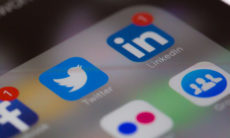Distribution strategy, despite being one of the fabled 4 P’s (“Place”), has traditionally been outside the direct purview of B2B marketers. It’s time for a change. The severe disruption in distribution value chains in recent years provides a great opportunity for manufacturers to rethink how to deliver their products to customers most effectively. Marketing must get involved. I asked Mark Dancer, a deep thinker on the subject, to help us consider the possibilities. Read on.
What should manufacturers keep in mind when developing—or rethinking—their distribution strategies today?
Distribution strategy must be built on business strategy and a deep understanding of the needs of fast-changing markets. Simply pushing distributors to carry inventory in the past. The future involves shared data and analytics, e-commerce, value selling, emotionally intelligent customer service, along with the discounts, rebates, and incentives designed to encourage them.
Are there particular points of leverage where manufacturers can gain an advantage in structuring their distribution model?
In the past, manufacturers with super-strong brands had the greatest leverage in creating differentiated distribution models. Today, the focus is shifting to customer experiences, or what I call “usership,” versus ownership. Say your customer is a facilities manager who needs a pump. Traditionally, your distributor would sell him your pump. What if your distributor could deliver the pumping function as a service, managed by an app that tracks the usage, predicts the need for repairs, educates the user, and offers a network of peer facilities managers to share ideas and experiences? This means distributors working side-by-side with customers to help them plan, execute, and measure their operations, and provide far more value than they have traditionally.
How can manufacturers be better clients and partners with their distributors?
The linear value chain needs a makeover. Manufacturers must ask their distributors to step up with new ideas, services, and partnerships. Take the example of EchoSystem, an e-commerce platform designed specifically for the chemical industry, which includes the essential functionality missing from generic platforms like Amazon or Alibaba, such as compliance support, credit insurance, and ACH payment systems.
What is the role of the marketing function in distribution decisions? Or, what should be the role?
To build an optimal distribution strategy, marketing should begin with end-customer journey mapping, to uncover the “jobs to be done” and the ideal solution to be “hired.” To go beyond the purchase decision for your product, to the underlying customer need.
I recommend that marketers include distributors in the process, despite their obvious self-interest. Push them to share their insights into the customer and their ideas for how to add value.
As a Fellow for the NAW Institute for Distribution Excellence, you help explore the future of distribution. Please share a few of the big ideas you’re working on.
I am working to adapt the state-of-the-art processes found in technology companies for use by distributors and their partners. Foresight and business model innovations are essential leadership skills in today’s changing market.
Another initiative is about replacing traditional distributor authorizations around products and territories with new contracts that coordinate digital capabilities, data sharing, and connectivity among partners. Territory exclusivity and channel compensation are old schools. Monetizing data, services, and value-creation are the future.
I am also working to encourage the human-centered design of services and products, instead of tech innovation for its own sake. Distributors and manufacturers must compete in the virtual world, but they are not of that world. They must build from the value they can bring to workers and businesses, and develop technologies that enable that value.
Catch us up on the impact of the pandemic in 2020.
Covid-19 presented an immediate and existential threat to the distribution industry. Business evaporated overnight, hitting cash flow and liquidity hard. As the crisis continued, earlier investments in e-commerce platforms were rewarded, as business buyers moved online.
The best distributors adopted a community mindset and stepped up to help their customers survive through pandemic-specific order, payment and delivery programs, virtual meetups for sharing survival stories, hosting webinars on topics like stress management and family planning, offering new Covid-critical products, and more.
Today, the best distributors are taking stock of what they learned and how they evolved and making plans to continue innovating their services and business models. Thus, this is a great time for manufacturers and distributors to cooperate in innovating to drive change.
Thanks, Mark. How can readers keep an eye on your work?
My website is www.n4bi.com. My book, Innovate to Dominate: The 12th Edition in the Facing the Forces of Change® Series. I am reachable at mark.dancer@n4bi.com.







